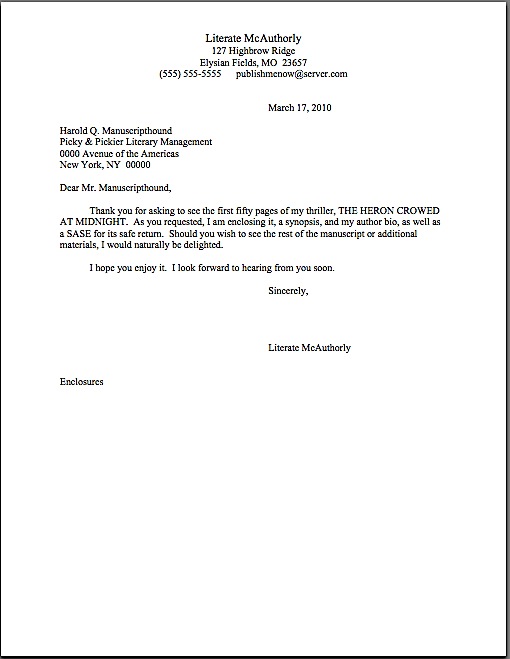
I’d like to start out with a request for clemency today, campers. Since the advent of Querypalooza early last month, I’ve been inundated with eager questions from anxious queriers. I’m thrilled about this, honestly — I do not think that writers, aspiring or otherwise, talk about this vital among themselves nearly enough. For that reason, I would like to make a formal request (or, more accurately, to codify a policy I had to adopt in self-defense a while back).
Ahem: would you mind posting questions in the comments section of the blog, rather than sending them to me via e-mail? Ideally, in either the comments section of the most recent post or, even better, in a post related to the question?
I ask for several reasons — and not due to the predictable it’s considerably less time-consuming for me to answer blog-related questions during my designated blogging time, rather than throughout my rather packed workday excuse. First, it’s more generous to other members of the Author! Author! community: if you have a question, chances are others do, too. Asking me to address your concerns privately deprives other readers of the opportunity to see the answer and ask follow-up questions. Second, it’s inefficient; it makes more sense for me to spend 20 minutes answering a question in the comments than to answer the same question 20 times individually, at 4 or 5 minutes per answer. Third, while I’m flattered that readers feel that I am approachable, it goes against the fundamental nature of a blog to follow up on discussions here by contacting me in secret.
Let’s all enjoy the discussion, shall we? I’d appreciate it.
Back to business. So far in Synopsispalooza, we’ve discussed what a synopsis is and isn’t, how it should be formatted, how to make it as brief as a single page, and how to cobble together something longer. I’ve also reminded you repeatedly — look, I’m about to do it again now — that there is no such thing as a standard length for a query or submission packet synopsis. Check EACH agency’s submission requirements for its individual preferences.
“But Anne!” those of you simultaneously querying or submitting to many agencies wail, and who could blame you? “Won’t that take a lot of extra time? Doesn’t it imply that instead of churning out one all-purpose synopsis, I may have to write several of different lengths? And what do I do if an agency’s guidelines do not specify a length, but merely says something like include a brief synopsis? Is that code for a particular length?”
My, you ask a lot of questions within a single breath, multiple queriers. In the order asked: yes, but it’s necessary; yes, but it’s necessary; I’ll get to that three paragraphs hence, and no — why would it be in an agency’s interest to trick aspiring writers about that?
Hey, nobody said that this process was going to be easy — or easy to figure out. It isn’t, even for the most talented first-time writer. If any malignant or ill-informed soul ever tells you otherwise, you would be better off whacking yourself in the head with a 15-pound carp than taking that ridiculous counsel to heart.
Not that I’m advising anyone’s whacking himself in the head with a fish of any size, of course. It’s not good for the fish, and it’s not good for you.
The general rule of thumb for everything an aspiring writer sends an agent is send them precisely what they ask to see. If their guidelines (usually available on its website and/or its listing in one of the standard agency guides; check both) ask for a 1-page synopsis, send a 1-page synopsis; if it asks for 4 pages, send 4. If, however, neither an agency’s published guidelines (for a query packet) nor the letter requesting materials (for a submission) specify how long a requested synopsis should be, it is up to you. Just don’t make it longer than 5 pages.
Why 5? Because, as I have mentioned in previous posts in this series, 5-page synopses have historically been standard for agents to ask clients they have already signed to produce for their next projects. If an agent does for some esoteric reason of his own expect queriers to guess what number he is thinking, it’s probably 5.
Not that the point of this exercise is to guess what the agent is thinking. Not about synopsis length, anyway.
Last time, if you will recall, we established that a nonfiction synopsis has six goals — that’s one more than we discussed last year, for those of you keeping track; the market’s continually evolving — and that those aims are different from the primary goals of a novel synopsis. To recap, a successful nonfiction synopsis should:
(1) present the problem or question the book will address in a way that makes it seem fascinating even to those not intimately familiar with the subject matter (even at an agency that specializes in your type of nonfiction, it’s unlikely that either Millicent or the agent will be very well-read in your particular area of expertise);
(2) demonstrate why readers should care enough about the problem or question to want to read about it (or, to put it another way: why should Millicent care about it?);
(3) mention any large group of people or organization who might already be working on this problem or question, to demonstrate already-existing public interest in the subject (if the group or organization is large, go ahead and say how large, so Millicent the agency screener can’t accidentally underestimate it);
(4) give some indication of how you intend to prove your case, showing the argument in some detail and saying what kind of proof you will be offering in support of your points;
(5) demonstrate why the book will appeal to a large enough market niche to make publishing it worthwhile (again, ideally, backed up with statistics), and
(6) show beyond any reasonable question that you are the best-qualified person in the known universe to write the book.
Let’s go back to the statistics issue, as it puzzles many first-time queriers and submitters. I ended yesterday’s post with a cliffhanger: no matter how large the prospective market for your book is, I told wide-eyed readers gathered around the virtual campfire, you can’t legitimately assume that an agent or editor will be aware of just how many potential readers inhabit it. Thus, when you are crafting a synopsis — or query letter, or book proposal — it’s prudent to assume that they will underestimate it.
And thus the market appeal of your book — or any nonfiction book, actually. Unless it’s a tell-all by a celebrity fresh out of rehab or somebody who used to work at the White House, few manuscripts’ market appeal is self-evident on the title page.
Do I already hear some impatient huffing out there? “This doesn’t seem right to me, Anne,” a few nonfiction writers protest. “While I understand why I am forced to descend to the sordid mention of market conditions and readership in my book proposal, my query letter, and any verbal pitch I might work up nerve to give in a conference elevator, the synopsis is supposed to be a summary of what the book is about. Therefore, it must be entirely about content, a pristine run down of just the facts, ma’am. Kindly mend your ways accordingly, missie.”
You’re partially right, impatient huffers: a fiction synopsis should indeed concern itself entirely with its book’s subject matter, rather than marketing concerns. A professional nonfiction synopsis, on the other hand, is mostly about content, but as we discussed yesterday, often is effectively a micro-proposal as well.
Or, to put it a bit more bluntly: if you want to query or pitch nonfiction to the pros, there’s no way to avoid discussing marketing issues. It’s the price a nonfiction writer pays for not having to write the entire book before selling it.
Why, yes, that does tend to be a trifle satisfying to novelists everywhere, now that you mention it. They have to write the whole darned book before they can legitimately start sending out queries and submissions; typically, all a nonfiction writer has to polish off is a sample chapter and a book proposal. And proposals, for the benefit of those of you who have not yet written one, are made up almost exclusively of marketing material.
There’s a reason for that, of course. I hate to break anyone’s bubble about the marriage of art and business, but marketability typically plays a far, far more important role in whether an agent, editor, or even contest judge will be interested in a nonfiction project than in novel. Most of the time, nonfiction sells better.
Don’t believe me, fiction-readers? Okay, try this little experiment: walk into the nearest large chain bookstore and take a good, long look around. Are most of the books fiction or nonfiction?
Assuming it is the latter (as is the case in most non-specialist bookstores), how are the bookstore’s nonfiction sections arranged? 99.99% of the time, it will be by subject matter — unlike the fiction, which is usually arranged by author’s last name, with perhaps separate sections for the better-selling genres.
Which means, at the querying and submission stages, that a nonfiction synopsis that acts like a fiction synopsis — that is, sticking to the story and nothing but the story — is typically a less effective marketing tool than one that gives some indication of what kinds of readers are in desperate need of this particular book and why.
Stop waving that dead fish at me. I didn’t set up this system; I just attempt to render it a trifle less opaque for newcomers.
Yes, the quality of the writing does make a difference in any query or submission, but the fact is, while novels can — and do — sell on the writing alone, even the best-written nonfiction is seldom marketed primarily upon the quality of the writing. In fact, that it’s not at all unusual for an author to be able to sell a nonfiction book, even if it’s a memoir, based on only a single chapter and a book proposal.
More huffing? Okay, go ahead and spit out that resentment: “But Anne, I’ve seen agency websites/listings in agency guides/heard one agent make an offhand comment at a conference and took it as an indicator of how every agent in North America feels insisting that they will ONLY look at memoirs that are already 100% written. So I guess you just misspoke about memoirs being sold by proposal, right?”
Well, I could see where a reader might think that as a memoirist who sold two books via proposal, my view might be a trifle skewed, but no: the vast majority of memoirs sold every year to U.S. publishers come in proposal form, not as finished manuscript. There’s a pretty good reason for that, too — not only are proposals significantly quicker for Millicent the agency screener and her cousin Maury the editorial assistant to read; it’s commonplace for publishers to ask for content change in a nonfiction book after acquiring it. Or even as a condition of acquisition.
Yes, even in memoirs — the writer may have lived the life, but ultimately, the editor is the one who decides what parts of that life are and are not included in the published book. And yes, that sometimes does involve editorial feedback like, “What if you approached this real-life incident in a completely different manner on the page than you did when it happened?”, “Is the mother character really necessary to the story?” and “How would you feel about leaving out that 50-page digression on three years of your childhood?”
Sorry, Mom — the editor says you’re toast. And apparently, 1974-1977 weren’t that interesting.
Given the likelihood that the acquiring editor will request changes, why would an agency stipulate that a memoir that’s probably going to undergo significant revision be completed before the writer queries? Well, a couple of reasons.
Topping the list: memoir can be emotionally devastating to write; I know plenty of perfectly wonderful memoirists who went through years of angst about whether they would be able to commit their lives to paper at all. An agency that doesn’t accept partially-written projects can be relatively certain that the writer will deliver the goods. Also — and again, I don’t want to send any of you memoirists out there spinning into shock, but better you hear this from me — it’s not unheard-of for agencies with this requirement to expect memoirists to construct a book proposal for the already-completed manuscript after they’re signed to a representation contract.
Yes, you read that correctly: a memoirist with a finished draft will probably have to write a book proposal for it, anyway. Working with an agency with a finish-it-first requirement does not necessarily equal a get-out-of-writing-a-proposal pass.
Try to look on the bright side. Since a proposal must talk about the storyline as if the book were already completed, it’s quite a bit easier to write with a manuscript already in hand. Why, all you have to do to come up with an annotated table of contents is to flip through the book, see what each chapter is about, and summarize it.
Besides, the goal of a nonfiction query packet is to prompt Millicent to ask to see the proposal and/or sample chapters, right? So if you’re querying a nonfiction project, the pros will expect you to have a proposal already in hand. So why wouldn’t you make it pellucidly clear in the synopsis who your target market is, why your book will appeal to them, how and why your subject matter is interesting — and, if you’ll pardon my committing the sacrilege, why a non-expert in the field might find it fascinating?
And before anyone asks: no, “Because I spent seven years writing it!” is not a sufficient answer to any or all of the last four questions. In the throes of writing, revising, and composing marketing materials for a book, it can be hard to remember that.
Remember, too, that for the synopsis to whet an agent, editor, or contest judge’s appetite for reading the proposal — the essential task of every syllable of a query packet, right? — the book’s content needs to come across as not merely intriguing to its target readership, but to industry types as well. So if you ever find yourself saying, “Well, that’s a trifle unclear, but my end readers will get it,” take it as a sign from the heavens that you should be rushing to revise that particular piece.
As with a fiction synopsis, you’re going to want to show why the book is appealing, rather than merely telling Millicent that it is — and the trick to that, often, lies in eschewing generalities in favor of juicy, intriguing specifics.
In this spirit, I reiterate: when writing a synopsis, it’s merely prudent to assume that professional readers will underestimate the size of your target audience…and thus the market appeal of your book. This is particularly true if you are pushing a book about anything that ever occurred west of, say, Pittsburgh to a NYC-based agent or editor, or any story set north of Santa Barbara or east of Los Vegas to an LA-based one.
Oh, should I have warned you to sit down before that one? It tends to come as a shock to writers living outside the Boston-DC Amtrak corridor.
Naturally, I’m not saying that northeasterners are myopic; let’s just say that the news media are not the only folks who think that little that happens to anyone outside of a day’s drive of their workplaces is likely to affect Americans. The rest of the country is far more likely to know about the general tenor of life in NYC or LA than the fine denizens of those megapoli (megapolises looks so silly) than the other way around. Of course, if those of us who lived outside of the major urban centers thought this way about, say, New York City or London, we would be called provincial.
I know, I know: this attitude seems rather odd in the age of lightning-fast electronic communication and swift travel across time zones, but regional differences still run strong enough that you might actually find yourself explaining to a charming, urbane agent with an MA in American Literature from Columbia or a law degree from Yale that yes, the inhabitants of Seattle CAN support a symphony, and indeed have for many years.
And schools. And indoor plumbing. I’m not entirely sure that my agent believes I don’t live in a tent with a yeti. He likes to boast that he’s never lived more than ten miles from the New York City hospital where he was born.
The first time he said it to me, he was taken completely by surprise when I, a 6th-generation West Coaster, instantly responded, “Oh, that’s so sad. You should get out more.”
I’m not bringing this up to rib him — okay, so I am just a little bit — but because being aware that agents may not be completely hip to your target demographic means that you, savvy marketer that you are, can compensate for it by coming right out and saying in your synopsis just how big and eager your market actually is for a book like yours.
You might want to bring it up in your query as well. And perhaps in the cover letter you tuck into your submission packet.
What can happen if you don’t, you ask? Only triggering one of the most common rejection reasons for nonfiction: it’s very, very easy for a book to be labeled as appealing to only a niche market. For those of you unfamiliar with the term, niche marketis industry-speak for “Well, no one I know would buy this book…”
Okay, so I’m exaggerating a trifle: technically, it means that the pros think that a book would only be marketable to what they assume to be a tiny demographic. Trout fisherfolk, for instance, or people with cerebral palsy.
Ten points to all of you who just gasped in annoyed disbelief: you are quite right that, in actuality, both of these groups are quite large — Trout Unlimited has 150,000 volunteers, and an estimated 1.5 – 2 million children and adults have cerebral palsy. The extended demographic of people who love members of both of those groups must logically extend into the millions.
Yet someone unfamiliar with those demographics might not be aware of that — which means that in many instances, if not most, a professional reader will be relying solely upon the information that you provide or his own guesstimate if you do not. I implore you, don’t assume that an agent, editor, or contest judge will necessarily be charmed enough by the writing in your synopsis (or book proposal — or book, for that matter) to conduct a little independent research before deciding whether to reject your query packet or submission.
“But Anne,” astonished veteran web-browsers everywhere exclaim, “why should I have to go to that trouble in the age of the Internet? If Millicent is curious about the size of my target market, all it would take is a 10-second web search to see if her guesstimate is correct.
Ah, but you’re assuming that she would drop everything to perform such a search. She’s not: screeners in agencies and publishing houses simply don’t have the time, and often, contest organizers specifically tell their judges that they may rate entries ONLY what’s on the page.
Which means, in practice, that Millicent is extremely unlikely to dismiss that book aimed at anglers without bothering to find out just how many people there actually ARE who habitually fish for trout.
Such as, for instance, our pal Ernest Hemingway, above. As anyone who has ever lived near a good fishing river could tell you, he had — and has — a whole lot of company. But I suspect that you’d have to run into a trout fisherperson or two before you’d see a book on trout and spontaneously cry, “By gum, there’s an immense market for this!”
The same often holds true for regional interest, alas. Due to the reality of where books get published in the United States, a story set in New York, Los Angeles, Chicago, or San Francisco will often be deemed of national interest, meaning that book buyers in other parts of the country (and world) might reasonably be expected to flock to the bookstores for it.
Because, obviously, readers the world over are sitting on the edges of their seats, wondering what’s going on in Brooklyn these days. Or so I surmise, from the immense number of books set there over the last hundred years. But let that same story be set in Minneapolis, Shreveport, Olympia, or Halifax, and NYC, LA, Chicago, and San Francisco-based agents and editors tend to dismiss it as appealing only to audiences in the region where it was set.
Think about it: if THE DEVIL WEARS PRADA hadn’t been set in Manhattan, do you honestly think that any major publishing house would have given it a second glance?
Which brings me to another very common piece of conference lore: over the years, I’ve heard many, many agents and editors tell writers of so-called works of purely regional interest that they’d be better off submitting their nonfiction, memoirs, and even novels to regional publishers. In recent years, I’ve begun to wonder to whom they are referring. The publishing industry is not, after all, like theatre — not every major city will spontaneously see a publishing house spring up out of the ground, started by spunky youngsters in their dorm basements, if necessary.
Can’t you just picture it? “I’ve got a barn,” a would-be publisher pants breathlessly, “and you have a mimeograph machine. Let’s publish some books!”
Doesn’t happen very often, alas. It’s a lovely fantasy, though, isn’t it?
Admittedly, there are a quite a few more regional publishers for nonfiction than for fiction or memoir; that’s true of small, independent presses in general. Even for nonfiction, though, it is definitely trickier to interest agents at the big agencies in subject matter unfamiliar to denizens of the Eastern seaboard or LA.
What strategy tip may we derive from this? Since it’s a safe bet that Millicent, Maury, or Mehitabel will in fact be perusing your query, submission packet, or contest entry with an eye to determining national interest, it’s a stellar idea to use your marketing materials — yes, including your synopsis — to make the case that your subject matter IS of national interest.
In the synopsis, as in the query letter and pitch, statistics can be your friend — and they needn’t be statistics about just how many people have already bought books on your topic, either. If you’re writing a blistering exposé of bear abuse in Montana, for instance, it would a very good idea to mention in your synopsis just how many visitors Yellowstone sees in a year, because chances are, Manhattanites will have no idea. (For some handy hints on how to find statistics to back up such claims, please see the YOUR BOOK’S SELLING POINTS category at right.)
Okay, impatient huffers, your time has once again come. Have at it: “But Anne, every time I go to a writers’ conference, all of the agents and editors keep saying that the most important thing for me to show up front is my platform. How does all of what you’ve been saying here fit in with that?”
Very well, actually — and I’m glad that you brought this up, oh huffers. In a nonfiction book synopsis, you not only need to establish the importance of the subject matter — you need to demonstrate that you are an expert in it. Seriously, it’s the first question almost anyone in the industry will ask after you mention casually that you are writing a nonfiction book. “So,” they’ll say, reserving comment about the marketability of your topic until after they hear the answer to this particular question, “what’s your platform?”
So if “Why are you the best person to write this book?” seems secondary to the subject matter, I’m guessing that you probably haven’t pitched a nonfiction book lately.
To clear the brows of those of you knitting them right now, platform is industry-speak for the background that qualifies you to write the book — the array of credentials, expertise, and life experience that qualifies you as an expert on the topic. Put another way, platform is the industry term for why anyone should trust a nonfiction author enough to want to believe what he says in his book, as opposed to any of the other similar books on the market. The platform need not consist of educational credentials or work experience — in fact unless you write in a technical, scientific, or medical field, it generally has less to do with your educational credentials than your life experience.
But by all means, if you happen to be a former Secretary of State, a child actor on a hit TV show, or NBA superstar, do mention it — but don’t be downhearted if you haven’t yet held a cabinet post in your field of expertise, however. As we discussed in Querypalooza, your platform consists ANY reason, or collection of reasons, that you are the single best person currently residing in the universe to write this particular book — and that members of the reading public might flock to see you do it.
Not books in general: this book. It’s a great idea to devote some serious thought to your platform before you begin to market your book — and yes, that means before you sit down to write the synopsis, too.
Don’t look at me that way; I’m doing you a favor here, not just assigning extra work for its own sake. All of you nonfiction writers out there should not only be prepared to answer questions about your platform before you have ANY contact with an agent or editor — you should be able to talk about yourself as an expert on the subject matter of your book. Trust me, you’ll be happier in the long run if you get used to thinking of yourself that way before you walk into a publishing house to meet with your new editor.
Synopsis-writing time is a great opportunity to start, because your synopsis should contain at least passing mention of your expertise. This is true, incidentally, even if your book happens to be a memoir.
“Wait just a memory-picking minute!” I hear the memoirists out there cry. “Isn’t it pretty darned obvious that I would be the single best living authority upon my own life?”
Not necessarily, from the industry’s point of view. A memoir is always about something in addition to the life story of its author, after all. Ideally, any statement of your platform should include some reference to why you are qualified to write about that other subject matter as well.
So should your synopsis. For instance, if your memoir is about spending your teenage years in a foreign country, invest a sentence or two of your synopsis in talking about how being an outsider gave you a unique perspective on the culture. If your memoir rips the lid off the steamy secrets of a cereal factory, you’ll be better off if you use your decade’s worth of experience filling those boxes as evidence that you are a credible expert on flakes. And if your childhood memoir deals with your love affair with trains, make sure you include the fact that you spent 17 years of your life flat on your stomach, singing “woo, woo” at a dizzying array of models.
You get the picture. It’s not enough to make your subject matter sound fascinating: in your synopsis, your account needs to come across as both fascinating and credible.
For what it’s worth, novels are generally about something other than the beauty of their writing, too. They have settings; characters have professions. For instance, the trilogy I am working on now is set at Harvard; I got my undergraduate degree there. Think that is going to make the books more credible in the eyes of the industry? You bet.
I could feel fiction writers’ blood pressure rising throughout the last few paragraphs, but don’t panic: technically, a novelist doesn’t NEED a platform. Go back and reread that comforting earlier bit about fiction often selling on the quality of the writing alone; repeat as often as necessary until your head no longer feels as though it’s about to explode.
It’s always a nice touch, though, if a fiction writer can mention a platform plank or two in her query, since (brace yourself, novelists) in this tough market, most agents will be pleased to see it. But for fiction, keep your synopsis platform-free; self-promotion in a novel synopsis tends to be regarded as compensation for some heretofore-unsuspected weakness in the plot or the writing.
Whew, that was a lot of gut-wrenching reality to cover in a single post, wasn’t it? I’m sure all of us could use some nice down time. If only we knew someone who might take us fishing…
More wit and wisdom on the synopsis follows tomorrow, of course. Keep up the good work!


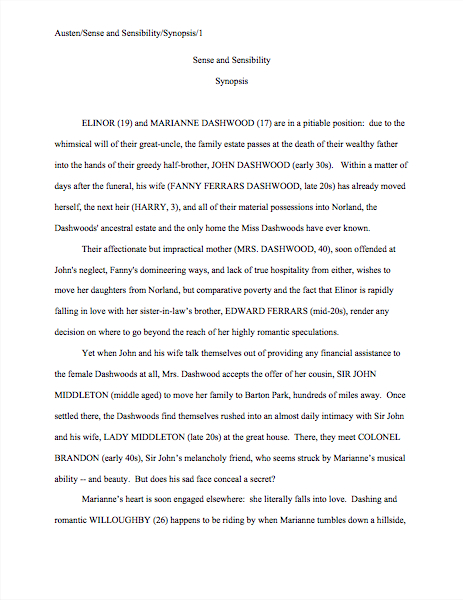
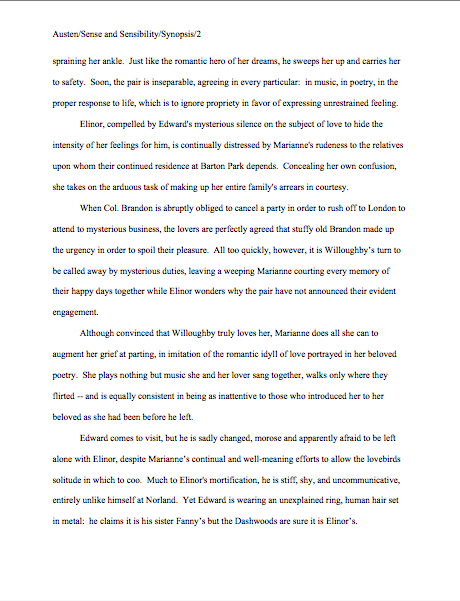
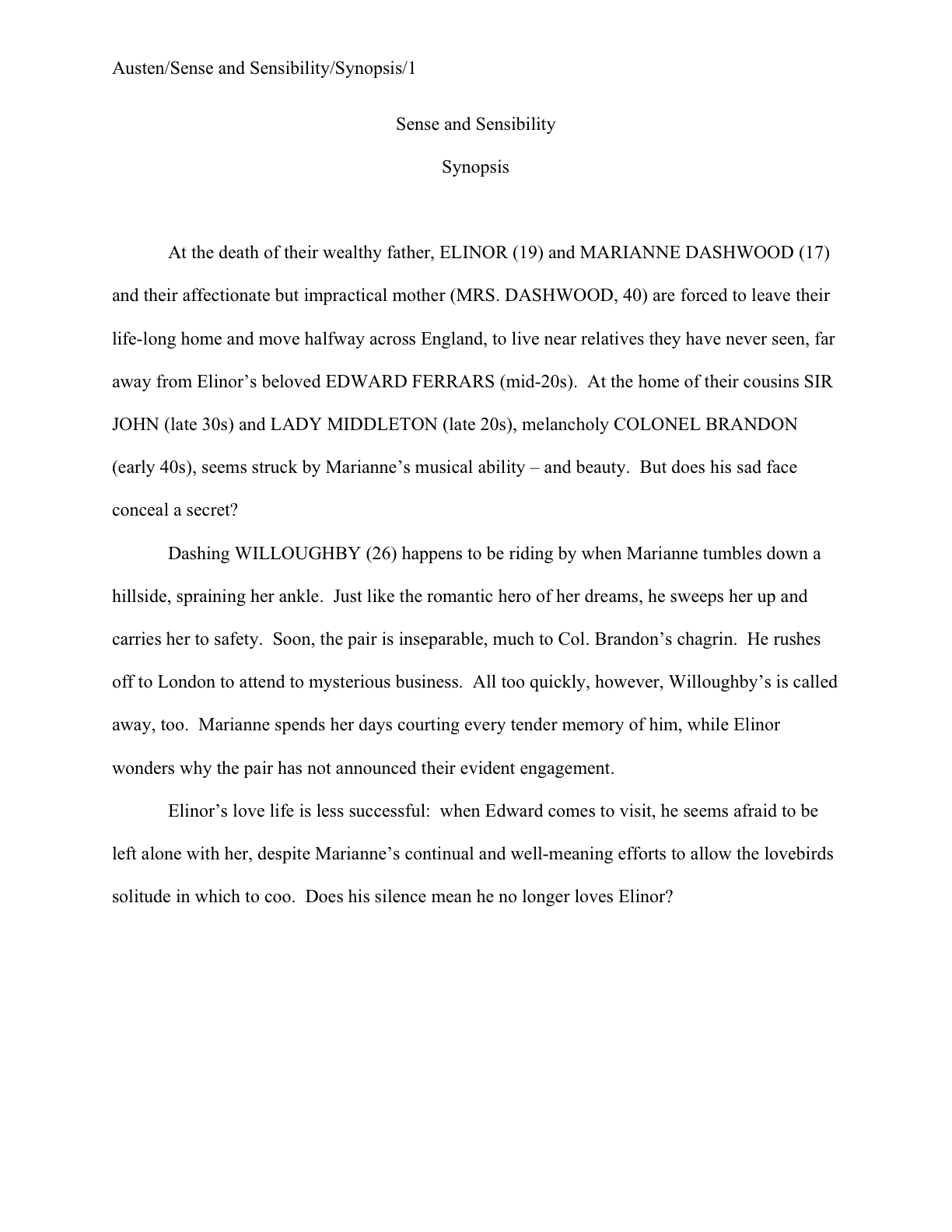


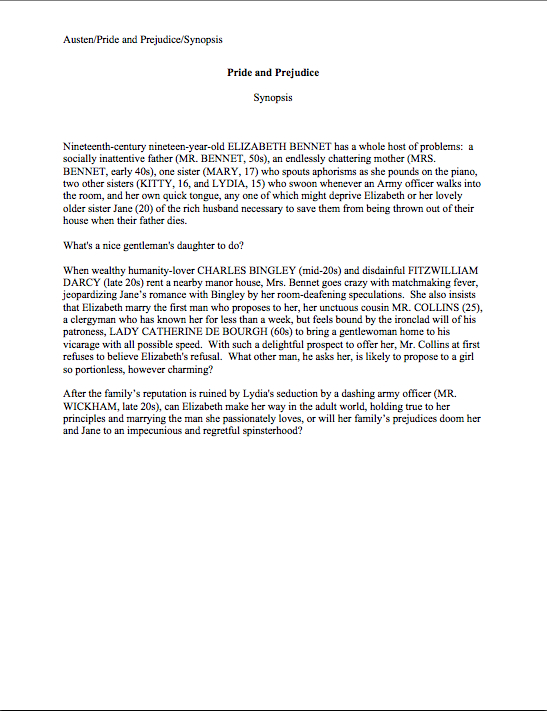






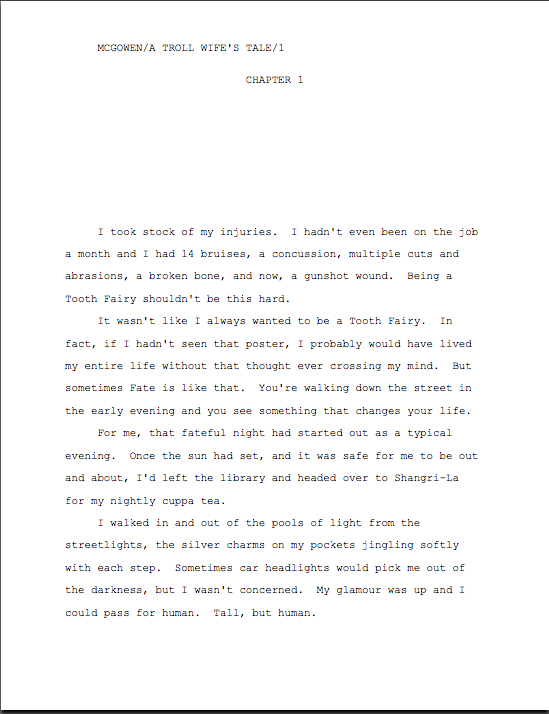
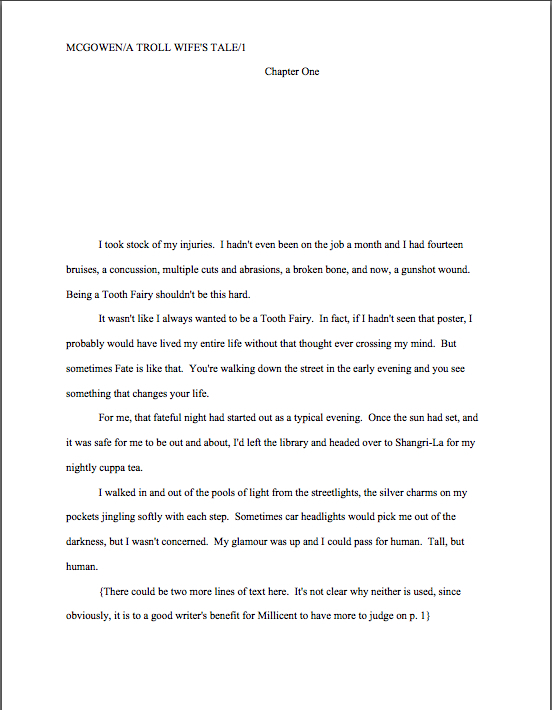
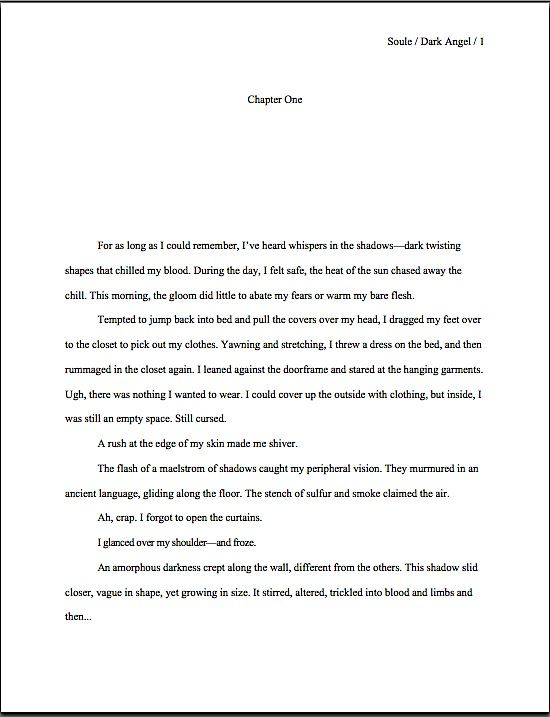
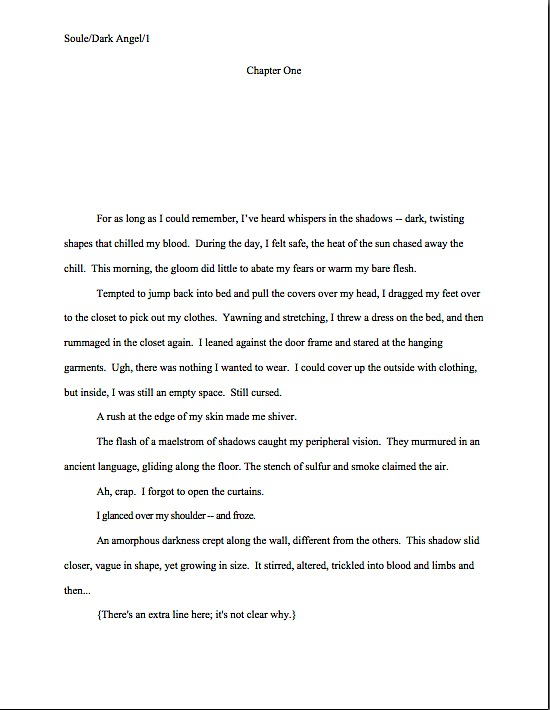

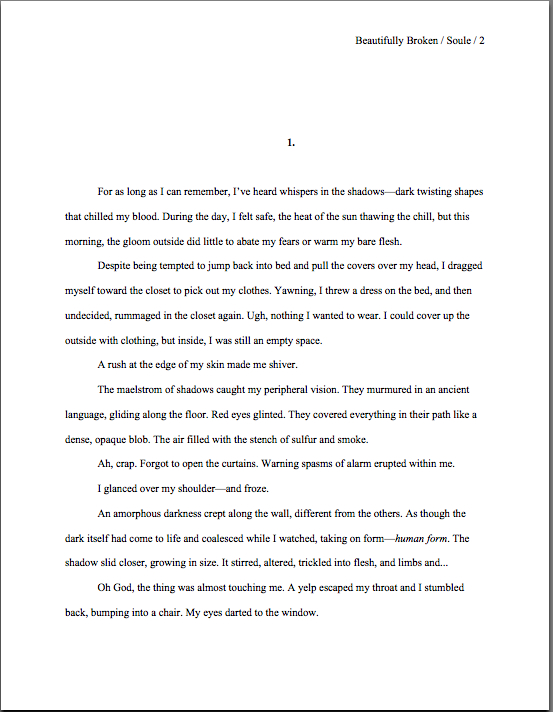
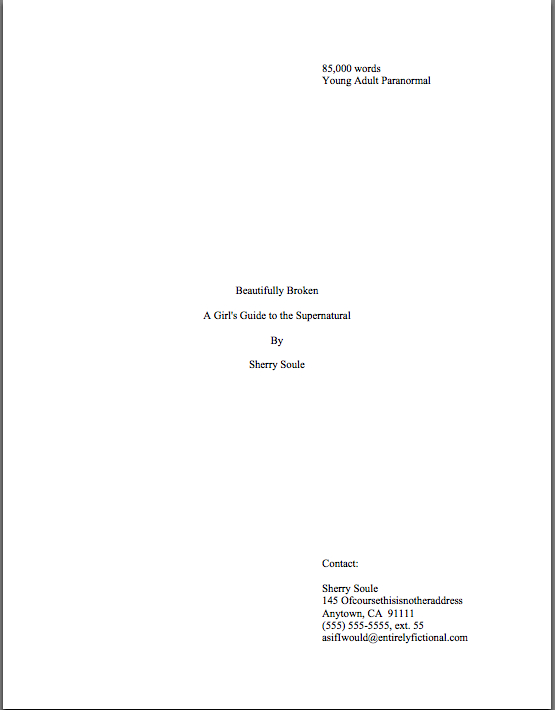
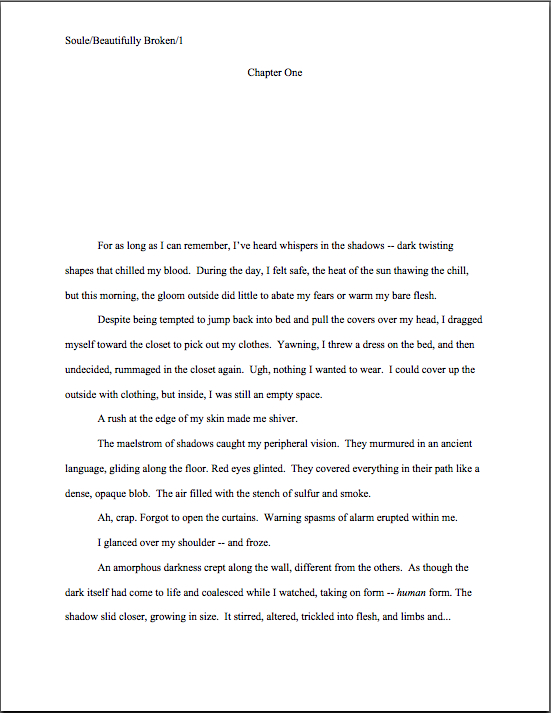
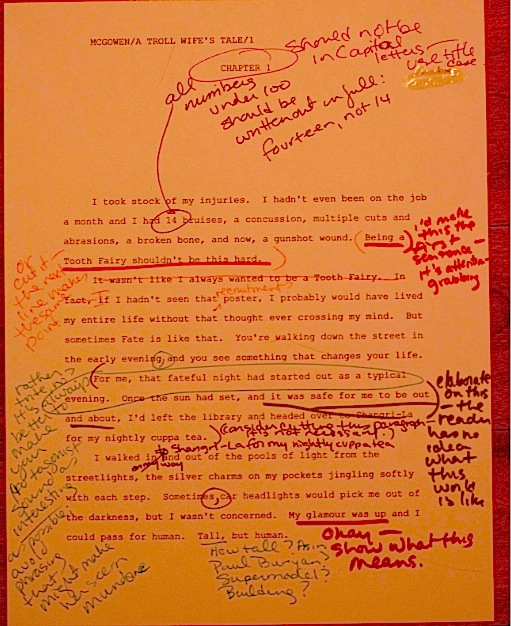







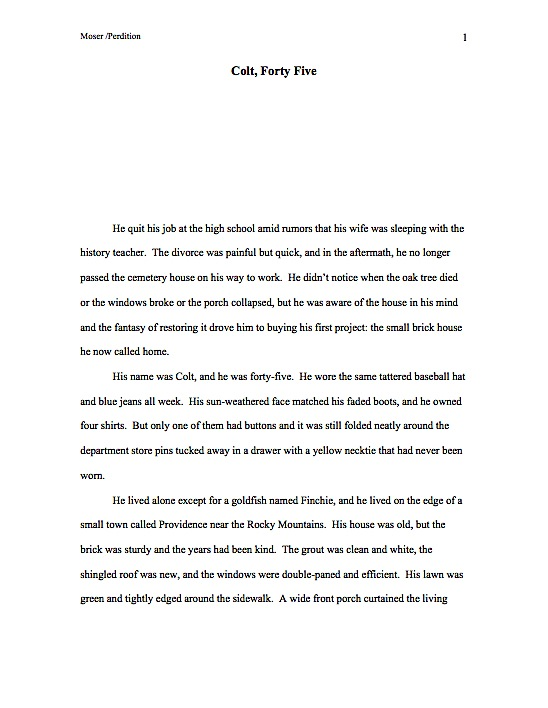

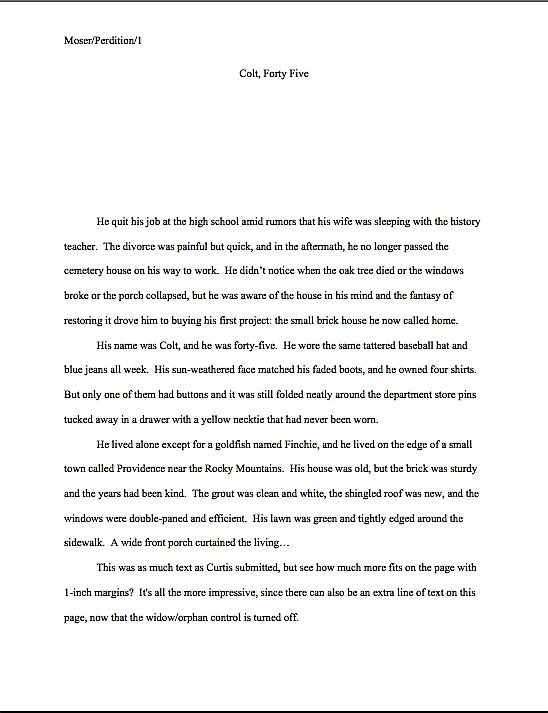


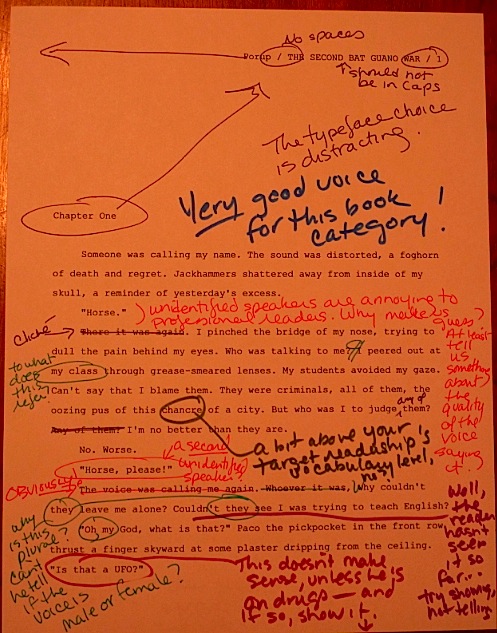

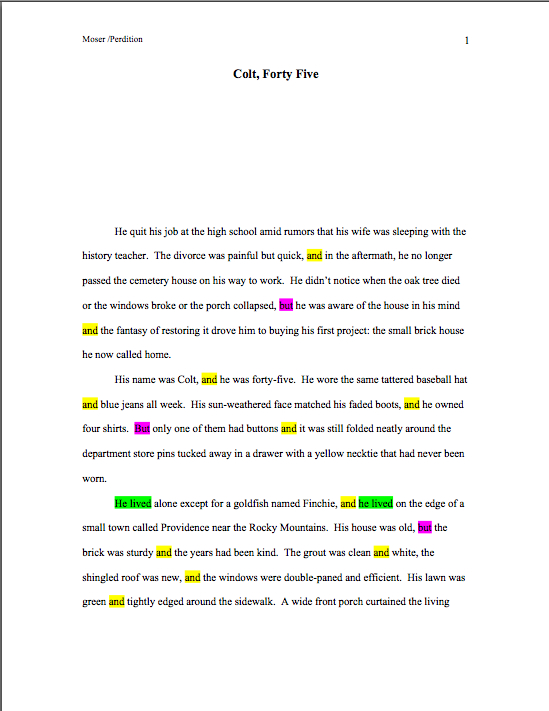

 No matter how many pages or extra materials you were asked to send, do remember to read your submission packet IN ITS ENTIRETY, IN HARD COPY, and OUT LOUD before you seal that envelope. Lest we forget, everything you send to an agency is a writing sample: impeccable grammar, punctuation, and printing, please.
No matter how many pages or extra materials you were asked to send, do remember to read your submission packet IN ITS ENTIRETY, IN HARD COPY, and OUT LOUD before you seal that envelope. Lest we forget, everything you send to an agency is a writing sample: impeccable grammar, punctuation, and printing, please.





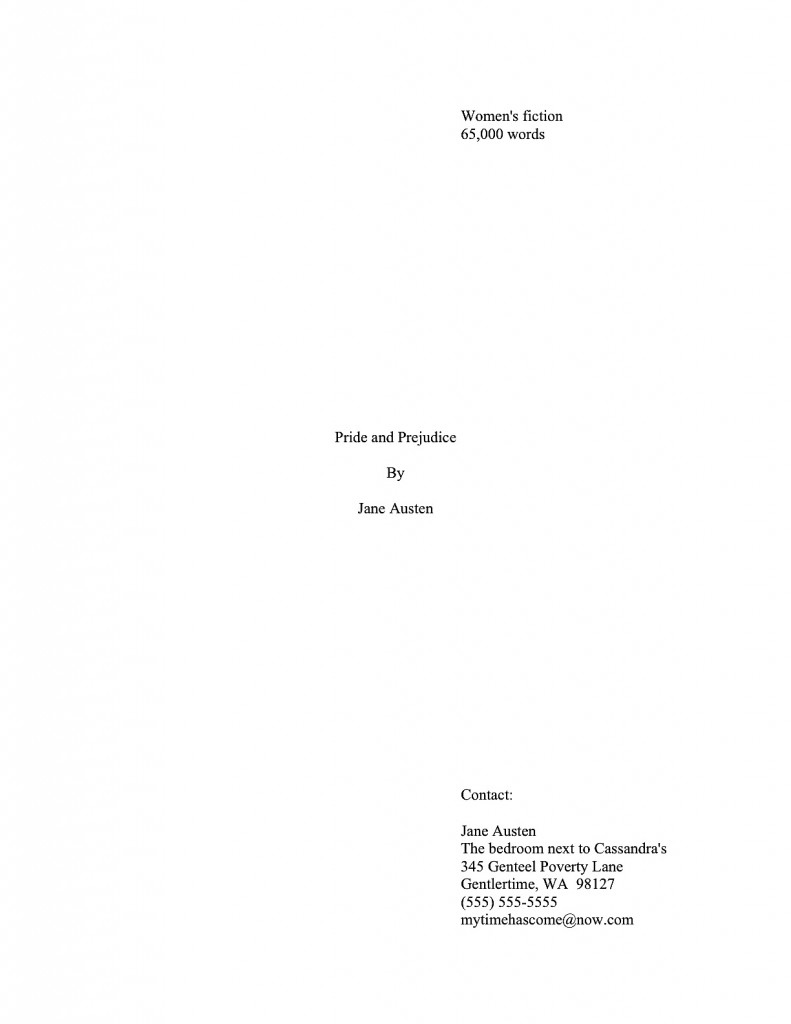


 No matter how many pages or extra materials you were asked to send, do remember to read your submission packet IN ITS ENTIRETY, IN HARD COPY, and OUT LOUD before you seal that envelope. Lest we forget, everything you send to an agency is a writing sample: impeccable grammar, punctuation, and printing, please.
No matter how many pages or extra materials you were asked to send, do remember to read your submission packet IN ITS ENTIRETY, IN HARD COPY, and OUT LOUD before you seal that envelope. Lest we forget, everything you send to an agency is a writing sample: impeccable grammar, punctuation, and printing, please.

